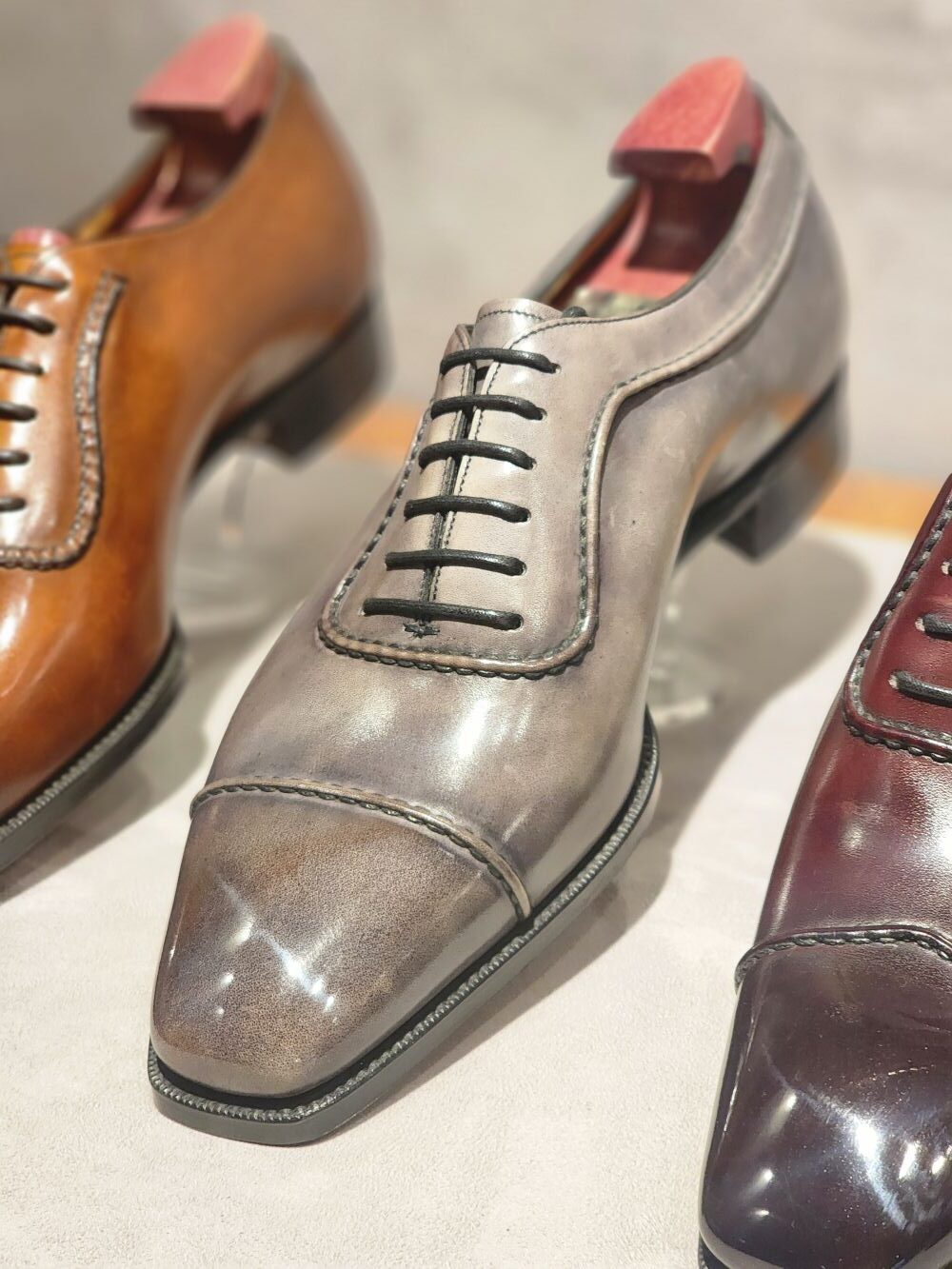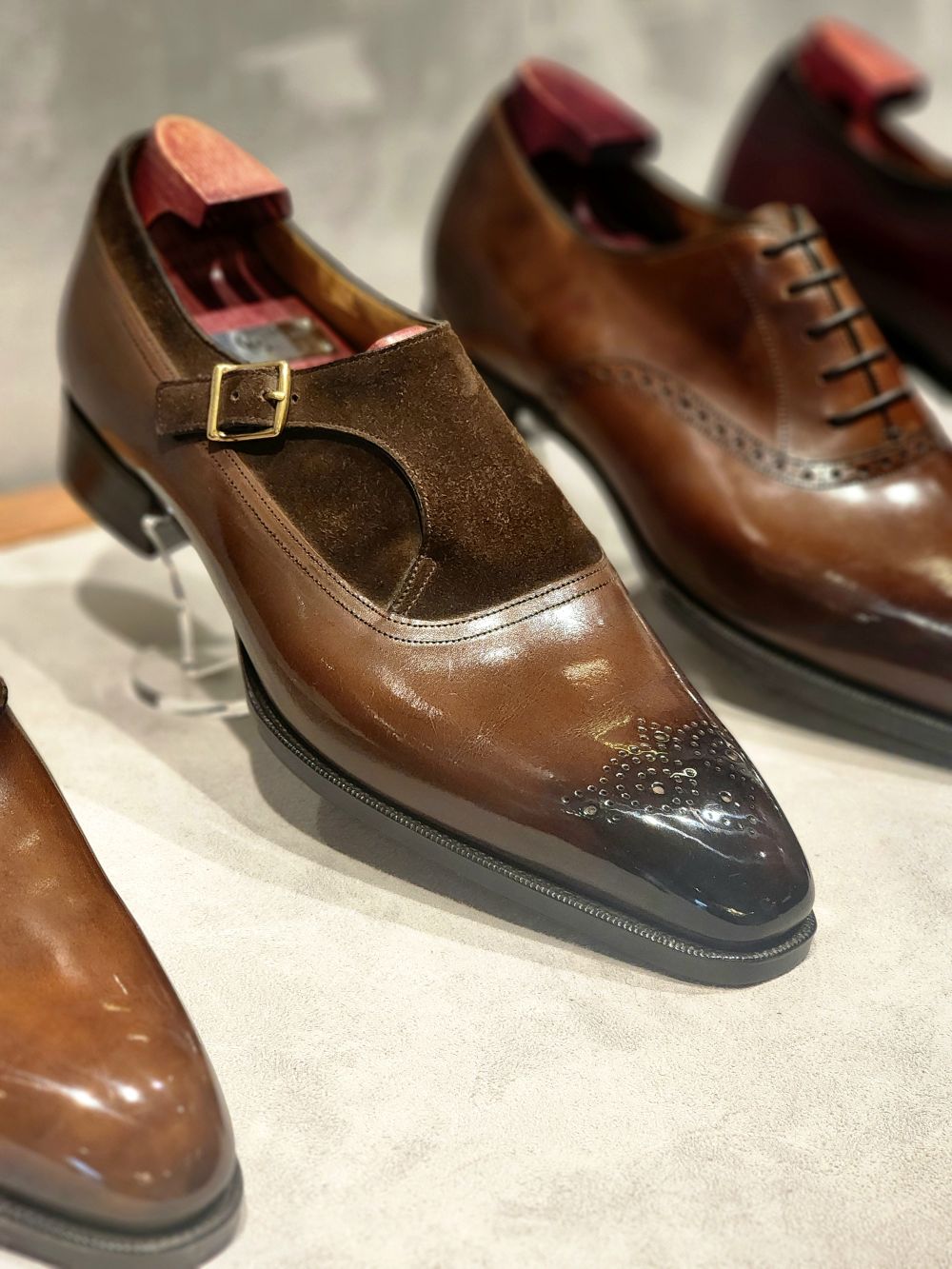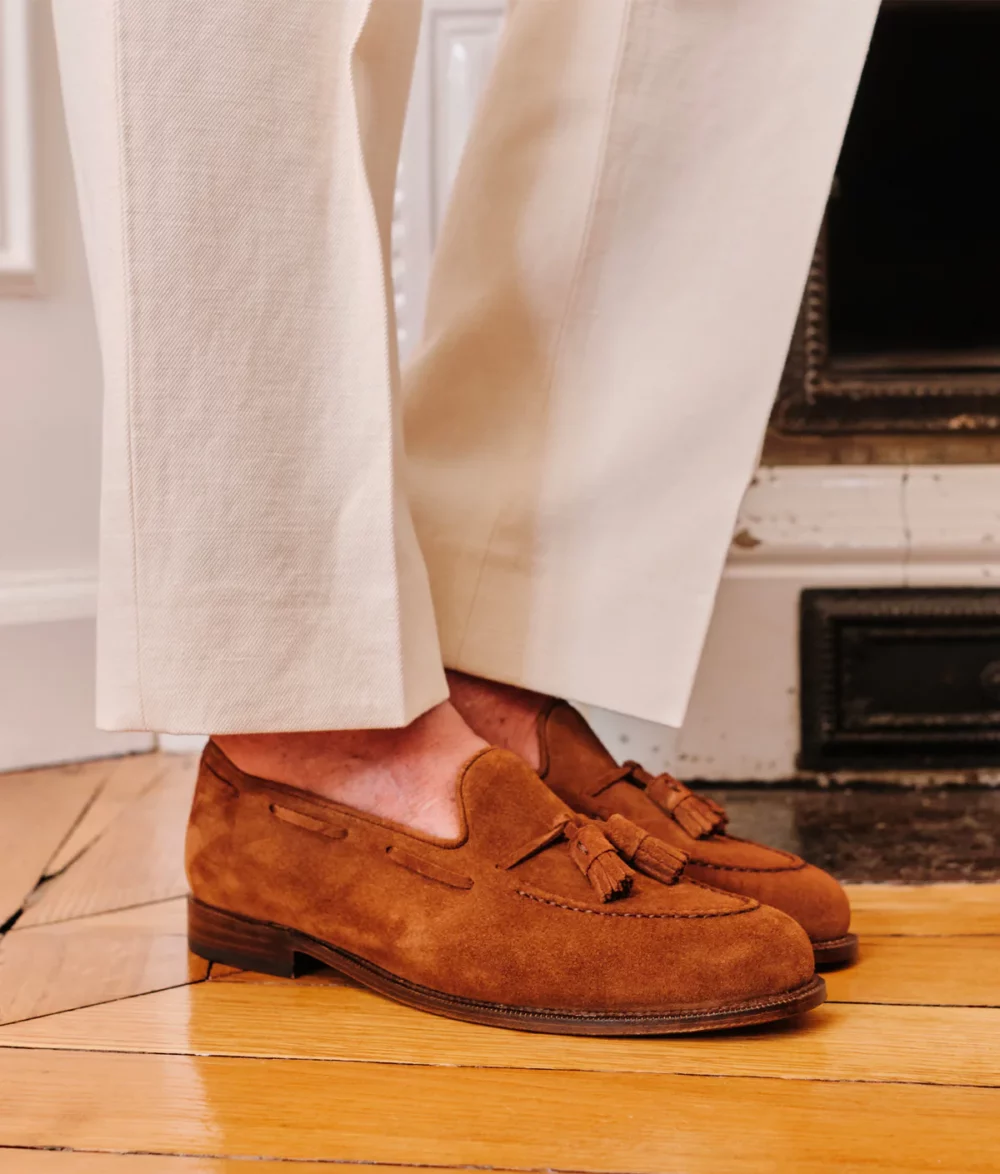

When it comes to welted shoes, few debates stir the pot more than Goodyear Welted vs Hand Welted construction. As someone who owns a shoe brand, has made shoes by hand, and has worn both types extensively, I often get asked: Which is better? Let’s break it down—objectively and realistically.
Goodyear Welted vs Hand Welted
What is Goodyear Welted?
The term “Goodyear Welted” refers to a construction method developed by Charles Goodyear Jr. It uses a machine to attach a leather welt to a rib (usually canvas) that’s cemented onto the insole. The outsole is then stitched to the welt, creating a strong, resolable structure. The key point here? It’s machine-made, which means any brand marketing Goodyear welted shoes as “handmade” is technically contradicting itself.
What is Hand Welted?
As the name suggests, “Hand Welted” shoes are welted by hand. Instead of using a canvas rib, the insole itself is carved or built up to form the rib. The welt is then hand-stitched directly into the insole and upper. This creates a very durable bond. The outsole may still be attached by machine, but the key construction is done manually—no Goodyear machine involved.
Which is Better?
This is where things get tricky. Shoemakers who do hand welting will argue that their method is superior, citing durability and resoling longevity. On the other hand, Goodyear welted shoes dominate the market and can be incredibly well-made. English shoemakers have been using this method for years and are often regarded as the cream of the crop for ready-made footwear.
So, let’s look at the pros and cons based on real-world factors.


Resoling Potential
Hand Welted shoes can be resoled more times—in theory. That’s because the rib is part of the insole and doesn’t degrade as quickly as the glued-on canvas rib used in Goodyear construction, which can deteriorate after repeated resoling. However, no material lasts forever, and even hand-welted insoles can eventually erode, especially if exposed to excessive moisture.
Verdict: Hand Welted wins in this specific category, but the difference only matters if you resole your shoes repeatedly.
Daily Wear vs Rotation
Most people who care about this topic don’t wear just one pair of shoes daily. Let’s say you own five pairs and rotate them weekly. That rest time alone exponentially increases each shoe’s lifespan—Goodyear or Hand Welted.
In this scenario, the longevity advantage of hand-welting becomes virtually irrelevant. With proper care and rotation, both constructions can last decades.
Verdict: In real-world wear, there’s no meaningful difference.




Fit, Design & Aesthetic Value
Fit and design will always matter more to me than construction type. A beautifully designed, well-fitting Goodyear welted shoe is infinitely better than a poorly fitting, hand-welted one.
That said, hand welting often goes hand-in-hand with hand lasting, and that’s where you may notice a real difference. A skilled shoemaker in hand-lasting can sculpt the upper to the last with precision, resulting in a sleeker, more elegant silhouette. You don’t often get that from machine-lasted shoes.
Verdict: Hand-welted shoes may edge out Goodyear welted in form and finish, but only if done by a highly skilled artisan.




Cost and Value
Hand welted shoes are often significantly more expensive. But again, if you have a solid rotation, your Goodyear welted pairs could outlast your need for resoling altogether.
I’ve got over 300 pairs of shoes, and I’ve only had to resole three. Most shoes won’t even reach the resoling stage if you own more than five pairs and take proper care of them. So, is that extra cost always justified?
Verdict: Goodyear Welted offers better value for the average buyer with a moderate to large collection.
Exception: With the rise in Asian manufacturing, you are now getting access to low-cost ‘hand-welted’ shoes, from brands like Meermin and Blkbrd Shoemaker, offering them under $400.




Prestige & Craftsmanship
Let’s be honest—part of the appeal of hand welted shoes is the prestige. There’s something undeniably special about knowing your shoes were crafted with time, skill, and tradition. For collectors and purists, that matters.
But for everyday wearers? Probably not so much.
Verdict: Hand Welted has the upper hand for craftsmanship snobs, but Goodyear offers more practicality.




Conclusion: Which Should You Buy?
If you only plan to own one or two pairs of shoes and want maximum longevity and craftsmanship, hand-welted may be worth the investment.
But if you’re a shoe lover, collector, or someone who rotates pairs regularly, a well-made Goodyear welted shoe will serve you just as well—if not better for your wallet.
At the end of the day, Goodyear Welted vs Hand Welted is less about “which is better” and more about “what do you value?” If you’re choosing based on fit, design, comfort, and brand integrity—either construction can give you a fantastic shoe.
Buy what makes you happy. That’s what truly matters.
Make sure to subscribe to my YouTube Channel for more great video content: https://www.youtube.com/@theshoesnob_official
—Justin FitzPatrick, The Shoe Snob
Shop · Marketplace · J.FitzPatrick Footwear · Patreon











